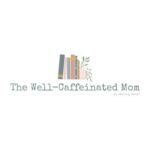Today’s guest post comes from Leenah Arandia of Build & Renovate. As global awareness of sustainability and carbon footprint grows, it’s crucial to build your home’s surroundings to be resilient and low on energy consumption. Adopting energy-efficient landscaping practices is one legitimate way to do that.
The residential sector accounts for approximately 20% of energy-related greenhouse gas emissions, mostly from fossil fuels used to heat, cool, and power such built environments.
However, as global awareness of sustainability and carbon footprint grows, it’s crucial to build your home’s surroundings to be resilient and low on energy consumption. Adopting energy-efficient landscaping practices is one legitimate way to do that.

Energy-efficient landscaping involves homeowners designing and modifying various elements of their homes to meet their aesthetic and efficiency objectives.
An energy-efficient landscape design offers numerous benefits for the environment and the homeowner.
Key advantages of energy-efficient landscaping:
Reduced energy consumption
A tree, shrub, or vine planted in the right location in the lawn or backyard can provide shade or act as a windbreak, saving up to 25% of the energy a typical household uses.
Environmental conservation
Energy-efficient landscapes decrease the need for artificial heating and air conditioning, thus lowering the reliance on fossil fuels, reducing greenhouse gas emissions, and conserving natural resources.
Increased property value
These landscapes improve a property’s overall aesthetics, enhancing its curb appeal and leaving a lasting positive impression on potential buyers or renters. Moreover, the reduced energy consumption from these landscape designs translates into lower utility bills for the occupants, making the property more attractive and financially enticing.
Improved occupant health
Energy-efficient landscapes often incorporate green spaces, which have been proven to positively impact mental health by welcoming opportunities for relaxation, stress reduction, and connection with nature. Plants also absorb carbon dioxide and release oxygen, thus improving air quality and creating a healthier environment for occupants to breathe in. Furthermore, energy-efficient landscapes promote physical activity by providing an inviting outdoor space for recreational activities such as walking or gardening.
Energy-Efficient Landscaping Design Tips and Best Practices
Plant trees strategically
When planting trees and shrubs, consider their proximity to your home. The closer they are to your home, the greater the shade they offer. However, it’s crucial to avoid planting them too close, as their roots can threaten the property’s foundations. You can also consider placing plants near windows to help block the sun’s rays from beaming inside.
Use vines as insulators
Growing vines or shrubbery around your home’s exterior can provide an additional layer of insulation, thus regulating indoor temperatures and reducing energy consumption for heating and cooling. However, it’s crucial to plant the shrubbery at least 2 meters from the building to prevent dampness and insect infestations.
Sustainable hardscaping
Hardscape can be one of the most effective practices for promoting energy efficiency and sustainability in landscape design. Sustainable hardscaping involves using eco-friendly materials in the design and construction of non-living elements in outdoor spaces, such as pathways, patios, retaining walls, and fences. These elements can serve as windbreaks, which help maintain comfortable outdoor and indoor temperatures.
Since sustainable hardscaping uses reclaimed materials such as recycled concrete, wood, or salvaged stone, it reduces the demand for new materials and diverts waste from landfills.
Composting
Composting is a natural process that involves decomposing organic materials, such as food scraps, yard waste, leaves, and other biodegradable materials, into a nutrient-rich soil amendment known as compost. This process occurs through the activity of microorganisms, such as bacteria and fungi, and other decomposing organisms, such as worms, which break down the organic matter into humus. This dark, crumbly substance is rich in organic nutrients.
Composting decreases the volume of waste that must be processed and reduces the energy required for landfill operations, including waste compaction and leachate treatment.
Install green roofs
Green roofing, also known as living roofing or eco-roofing, involves the installation of plants and grasses on the roof of a home or a building. Green roofs are a barrier that reduces heat transfer within the building and the outdoor environment, keeping your home cooler in the summer and warmer during the winter. Moreover, green roofs absorb excess rainfall and ease the burden on drainage systems.
Earth sheltering
Earth sheltering is a construction technique where a building is partially or entirely covered with earth or soil. This method utilizes soil’s thermal mass and insulating properties to moderate indoor temperatures and reduce energy consumption for heating and cooling.
Earth sheltering also reduces the ecological footprint by decreasing the need for traditional building materials.
There are many ways to adopt energy-efficient landscaping for your home. In addition to the insights shared above, exploring tips and practices in architecture magazines can offer further inspiration and guidance. Remember, every small step contributes to bigger and longer-term benefits. Embrace innovation, creativity, and sustainability in your landscaping ventures, and watch as your home blossoms into a sanctuary of efficient and eco-conscious living.








Wonderful article. Any interest in purchasing and/or reviewing my next two kdp/Amazon brief books on EEL (ENERGY EFFICIENT LANDSCAPING): “Landscaping for Energy Efficiency in the Built Environment – Made Easy” and “Energy-Efficient Landscaping Handbook”- Landscaping energy-efficient design to shade dwellings’ openings (and/or other house and/or garden critical areas) via the use of strategically positioned trees and plants, by architectural graduate Daria Gomez Gane, 2024, (c)? ]If I manage I’ll also publish soon, again on Amazon KDP, the Energy -Efficient Landscaping Manual”-Effective solar mitigation strategies through the use of Energy-Efficient Landscaping (EEL).
By Daria Gomez Gane, 2024 ©].
Thanks. With kind regards, Daria